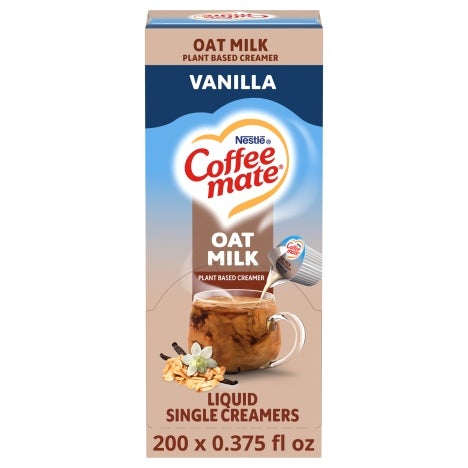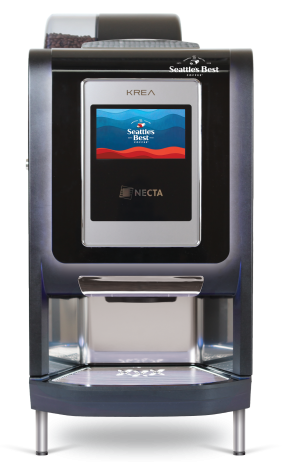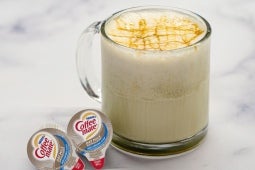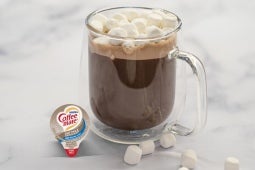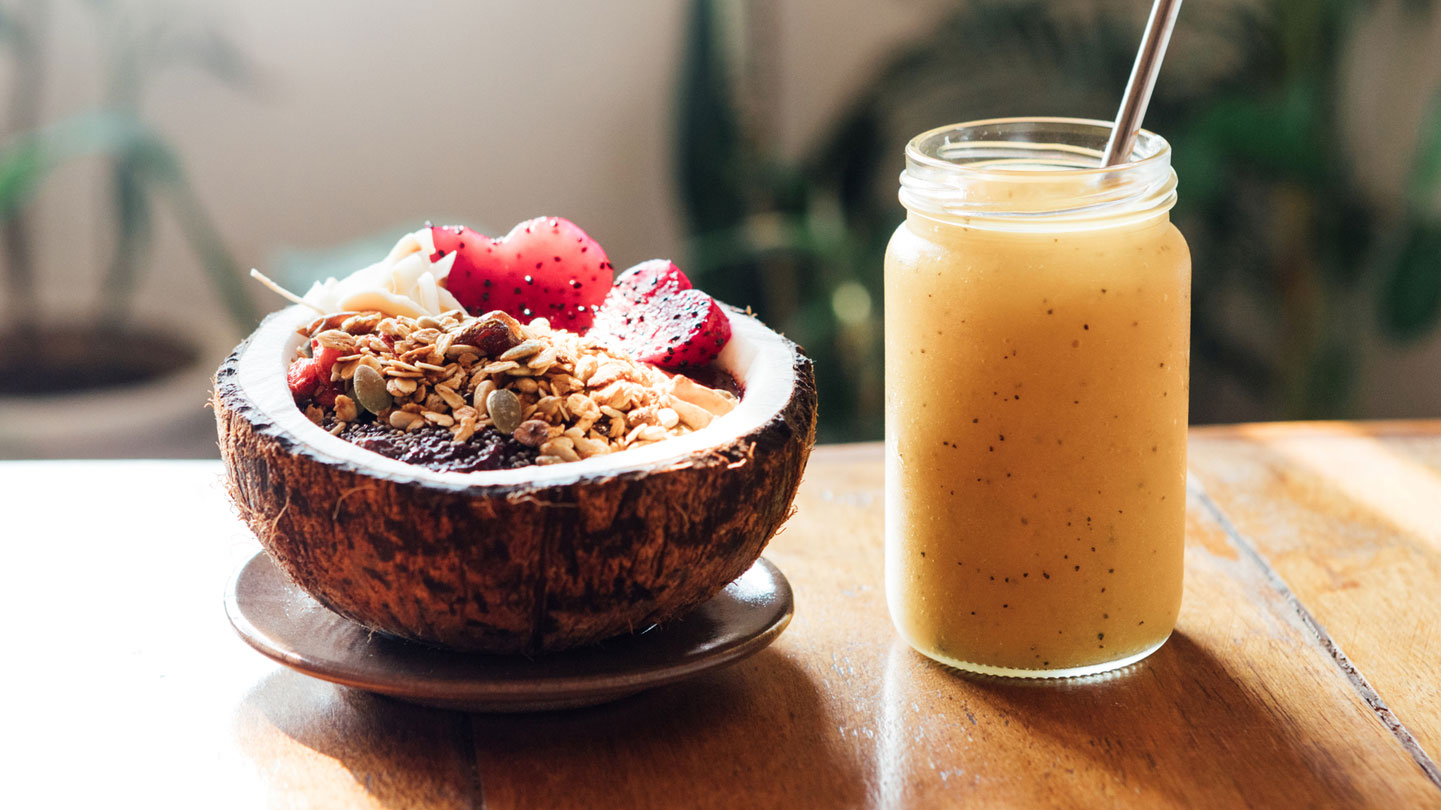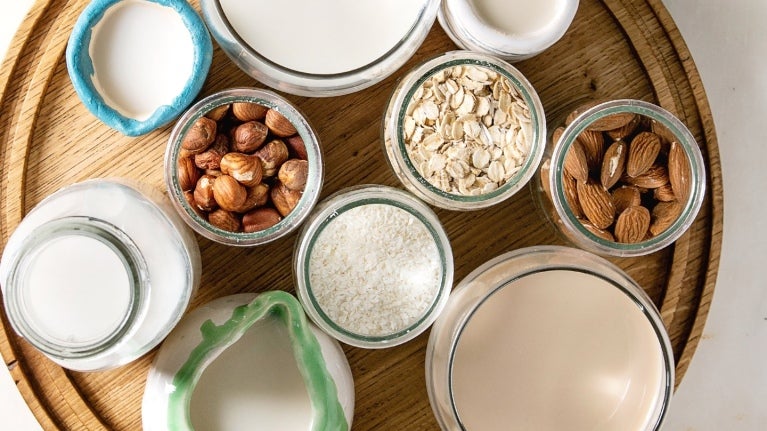
Top 6 Milk Alternatives, Plus Contenders
Nut milks and other nondairy milks are the driving factor in the milk category today. Find out how you can satisfy demand with alternative milk.
Got nontraditional milk yet? If all you offer today is regular dairy milk, you’re really missing out. The latest data shows that the overall milk category’s growth drivers have been overwhelmingly made from plants.
Plant-based milk contributed $105 million in growth to the overall milk category in 2021, for a total of $2.6 billion in sales, while animal-based milk declined by $264 million.1
“More and more consumers are turning to plant-based options that align with their values and desire to have a positive impact on personal and planetary health,” says Julie Emmett, Plant Based Foods Association’s (PBFA) Senior Director of Marketplace Development. The PBFA says these products continue to benefit from product innovation and expanded merchandising space and assortment.
What are the most commonly menued nondairy milks today? Here’s an up-to-date ranking by Datassential2:
- Almond Milk: Found on 3.6% of U.S. restaurant menus, almond milk has grown on menus by +41% over the past 4 years. Almond milk accounts for 59% of the total plant-based milk category’s sales.1 It is also the leading alternative creamer today, with 66% of customers having tried it as a creamer.3
- Coconut Milk: Found on 2.3% of U.S. restaurant menus, coconut milk has grown on menus by +78% over the past 4 years. However, coconut milk also shows signs of slowing. Levels of consumer use fell 10% year-over-year for coconut creamer.3
- Soy Milk: Found on 2.2% of U.S. restaurant menus, soy milk has seen its menu penetration over the past 4 years fall by -13%. Once the dominant milk alternative, soy milk has lost market share in recent years as other more on-trend milk alternatives have entered the market and caught on with customers.
- Oat Milk: Currently with 1.9% of menu penetration in the U.S., oat milk has grown on menus by 1,702% over the past 4 years, far outpacing all the other varieties. Oat milk is predicted to be on 9.0% of menus by 2026.4
- Rice Milk: Currently at 0.3% menu penetration, rice milk has seen its menu penetration fall by -24% over the past 4 years.
- Cashew Milk: Currently at 0.2% of menu penetration, cashew milk has seen its menu penetration rise by +30% over the past 4 years.
Other Milk Alternatives to Watch:
Pea Milk: While still early, some see a bright future for pea milk. It has a creamy taste and mouthfeel that can remind drinkers of cacao when added to coffee or tea.
Hemp Milk: Made from the same plant used to produce marijuana, hemp milk only contains trace amounts of the psychoactive compound tetrahydrocannabinol (THC).
Camel Milk: Shape magazine describes camel milk as “a lot like cow’s milk, but slightly more salty with a hint of sourness.” According to Datassential, “It’s touted across the globe for being not only lower in lactose but also rich in antioxidants and protein…(with) 3 times the amount of vitamin C and 10 times the amount of iron when compared to cow milk,” lending it a health halo. Concludes Datassential: “Nutrient-rich camel milk should be on your radar and could be leveraged in limited-time offers.”
Pecan: Technomic, in its June 2022 Emerging Eats report, says “Rich and buttery pecan is now finding momentum as the next trending nut-based dairy product behind almond, macadamia, and cashew dairy. Operators are spotlighting pecan milk and butter in breakfast food and beverage items.”
Others: There are too many milk alternatives to mention all of them, but others to consider menuing as they establish a customer base include flax, hazelnut, walnut, banana, and pistachio.
Interesting Facts:
- The appeal of milk alternatives is broader than you might think. Customers who identified as vegan make up only a small overall percentage of those seeking out milk alternatives5
- Taste is an important factor. While health is still the principal motivator for people to try plant-based alternative milks and creamers,3 19% ranked the fact that alternative milks “taste great” as the reason they drink them. Other reasons include, ranked in order of popularity: able to stay fresher longer, source of calcium, value, protein content, and allergies to dairy5
- When it comes to dairy milk versus plant-based, it’s not all or nothing. Nine out of 10 people who use nondairy alternatives say they still consume traditional dairy5
- Consumers treat plant-based alternatives similarly to dairy versions when deciding how much to add. Whether it’s by taste or by sight, coffee drinkers measure how much plant-based creamer they need to add the same way they would with standard dairy creamers. For most people, the same amount of alternative creamer gets the job done3
- The whole category has lots of runway left. Despite the wide availability of nondairy alternatives, half of people still never use plant-based options5
Did You Know?
New York Public Schools will be meatless on Mondays and Fridays. The largest school system in the nation will serve an all-vegetarian breakfast and lunch on Mondays, and a vegan breakfast and lunch on Fridays.6
31% of Gen Zers enjoy trying new plant-based foods/beverages at restaurants.7
Sources: 1. Plant Based Foods Association (March 2022). 2. Datassential MenuTrends, Non Dairy Milks (November 2022). 3. Datassential BUZZ Topical Report: Innovative Creamers (November 2022). 4. Datassential Alternative Milk SNAP Food Profiles (December 2022). 5. Datassential Non-Dairy Alternatives (January 2021). 6. Foodservice Digest/Technomic (September 2022). 7. Technomic Plant-Based U.S. Menu Trends (October 2022).
The information provided is based on a general industry overview and is not specific to your business operation. Each business is unique, and decisions related to your business should be made after consultation with appropriate experts.
